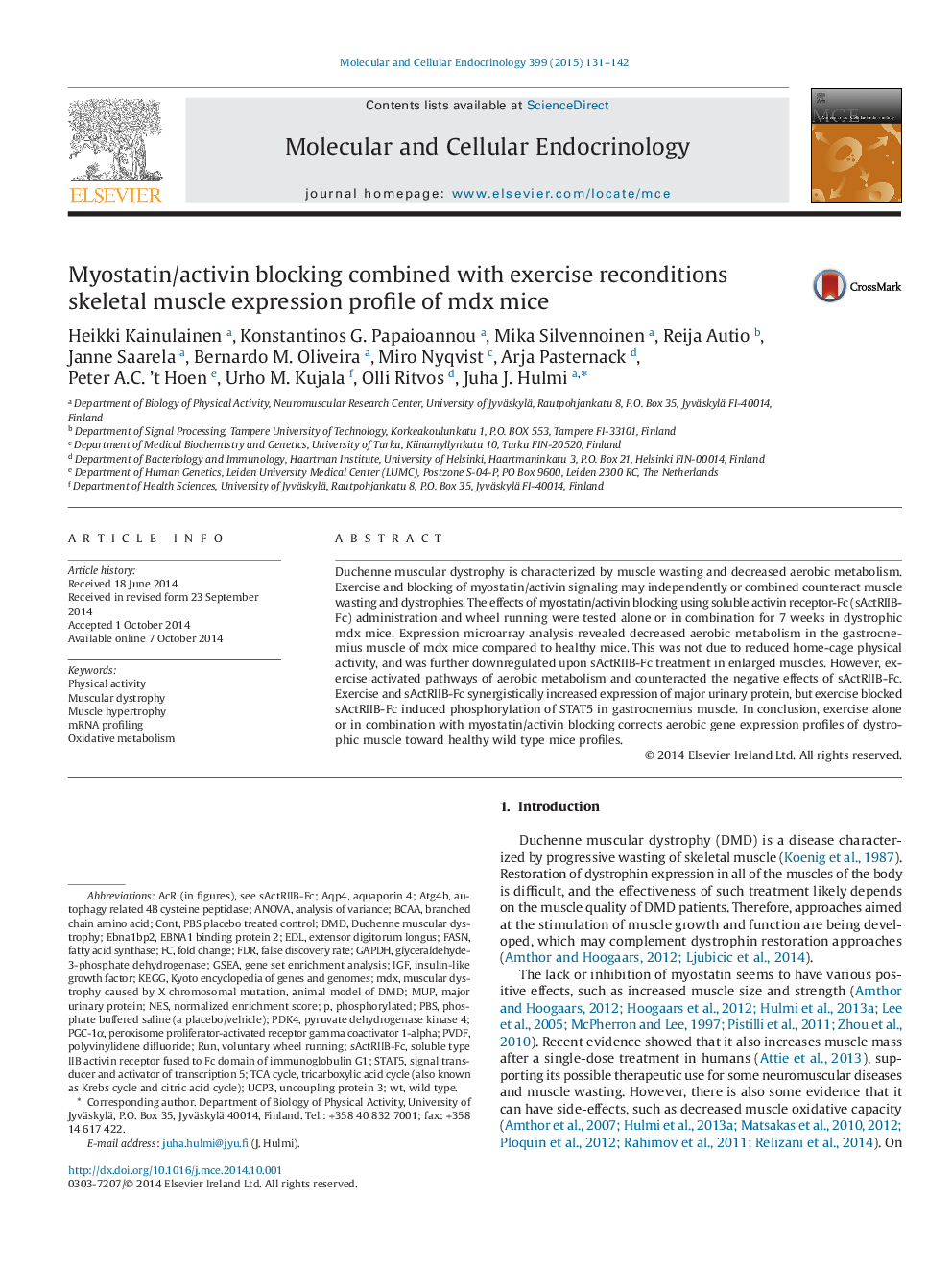| Article ID | Journal | Published Year | Pages | File Type |
|---|---|---|---|---|
| 2195957 | Molecular and Cellular Endocrinology | 2015 | 12 Pages |
•Decreased aerobic metabolism in mdx mice, not due to reduced physical activity.•Aerobic metabolism was further decreased by myostatin/activin blocking.•Exercise counteracted these effects of myostatin/activin blocking.•Exercise activated pathways of aerobic metabolism in mdx mice toward wild types.•Combination of exercise and myostatin/activin blocking affected pSTAT5 and MUP.
Duchenne muscular dystrophy is characterized by muscle wasting and decreased aerobic metabolism. Exercise and blocking of myostatin/activin signaling may independently or combined counteract muscle wasting and dystrophies. The effects of myostatin/activin blocking using soluble activin receptor-Fc (sActRIIB-Fc) administration and wheel running were tested alone or in combination for 7 weeks in dystrophic mdx mice. Expression microarray analysis revealed decreased aerobic metabolism in the gastrocnemius muscle of mdx mice compared to healthy mice. This was not due to reduced home-cage physical activity, and was further downregulated upon sActRIIB-Fc treatment in enlarged muscles. However, exercise activated pathways of aerobic metabolism and counteracted the negative effects of sActRIIB-Fc. Exercise and sActRIIB-Fc synergistically increased expression of major urinary protein, but exercise blocked sActRIIB-Fc induced phosphorylation of STAT5 in gastrocnemius muscle. In conclusion, exercise alone or in combination with myostatin/activin blocking corrects aerobic gene expression profiles of dystrophic muscle toward healthy wild type mice profiles.
